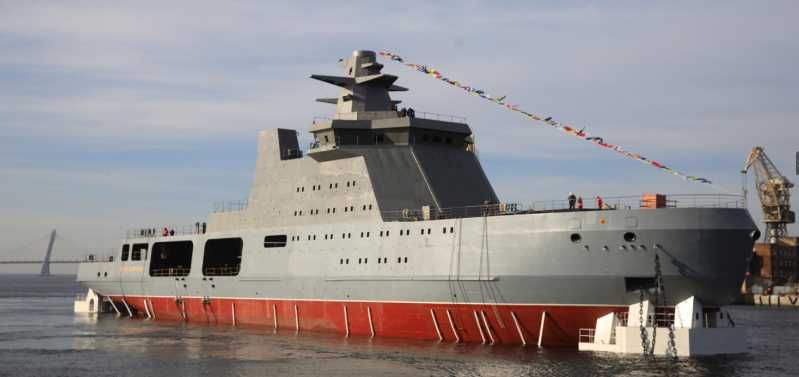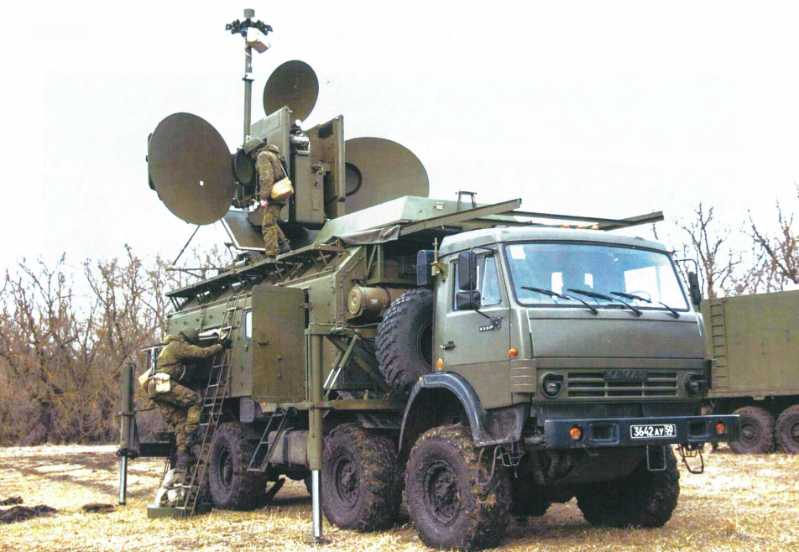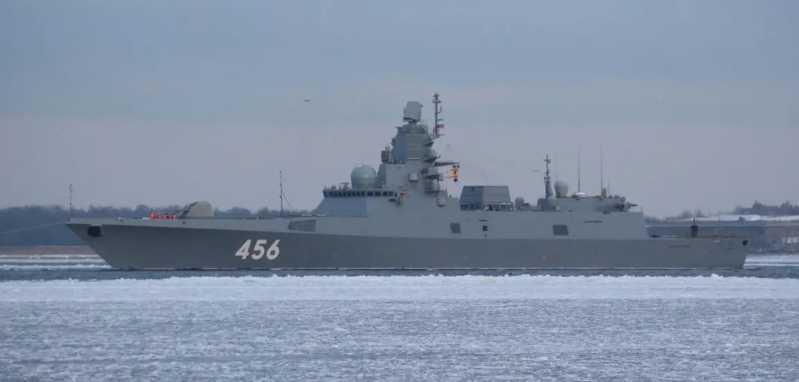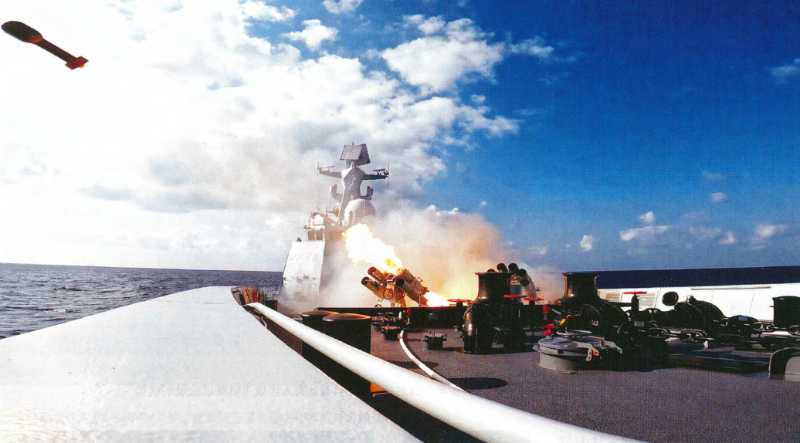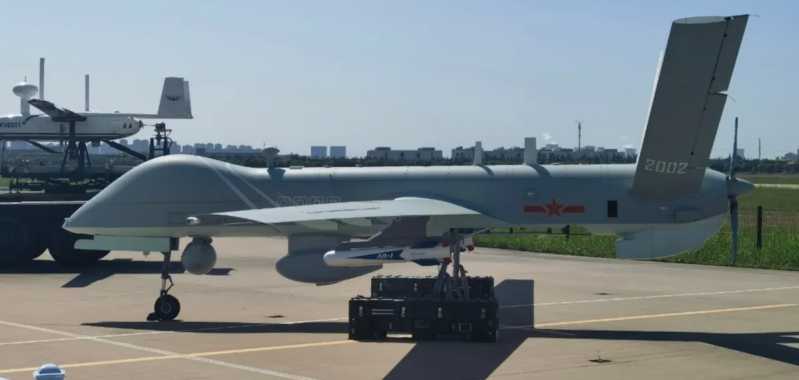During the Cold War, the Soviet Navy’s military diesel-electric icebreakers successfully played the role of "Arctic Warriors" and played a pivotal role in curbing the activities of the United States and its NATO allies in the Arctic. Before 2027, whether the Russian Navy’s military diesel-electric icebreakers, which have experienced vicissitudes, can continue to write the glorious history of defending Russia’s Arctic national interests has become a topic of great concern to the world.
Former glory
On May 9, 1945, after the victory of the Great Patriotic War, the Soviet Ministry of Maritime Transport had only dozens of obsolete steam-powered icebreakers produced before the victory of the October Revolution, which could not meet the escort requirements for civilian fleets on the Arctic Northern Route. Therefore, the development of high-power military diesel-electric icebreakers as soon as possible has become an urgent problem for the Soviet shipbuilding industry. At that time, the Soviet Navy was only equipped with a domestically produced Type 52 "Buran" military diesel-electric icebreaker. The standard displacement of the "Buran" is 3,165 tons, the maximum displacement is 3,819 tons; the length is 95.3 meters, the width is 15.1 meters, and the draft is 5.37 meters; the maximum speed is 17 knots, the economic speed is 10 knots; the full speed range is 3,467 nautical miles, and the economic range is 12,588 nautical miles. It is equipped with 6 37-D diesel engines with a total power of 8,940 kilowatts and a self-sustaining capacity of 35 days and nights. The weapons are 4 100 mm B-34YSM naval guns, 2 37 mm V-11M twin anti-aircraft guns, 4 BMB-2 depth charge launchers, 12 depth charges, and 30 KB mines. 219 crew members (284 in wartime) On May 22, 1947, according to the order of the Soviet Council of Ministers on "developing a new type of diesel-electric icebreaker to ensure the maritime transport of the fleet on the Arctic Northern Sea Route", the Soviet Ministry of Shipbuilding Industry ordered the 15th Central Design Bureau (today’s "Iceberg" Central Design Bureau) to develop the Type 97 diesel-electric icebreaker based on the "Ilya Muromets" diesel-electric icebreaker produced by Germany as compensation for Sweden. May 18, 1957: The Soviet Council of Ministers approved the development plan for the Type 97 diesel-electric icebreaker. On December 31, 1960, the first Type 97 "Dobrynya Nikitin" manufactured by the Navy Shipyard in Leningrad (today’s St. Petersburg) of the Soviet Union officially served in the Northern Fleet Auxiliary Fleet. The Soviet Navy Auxiliary Fleet refers to a fleet composed of auxiliary ships, which mainly ensures naval operations and daily life. Auxiliary ships include logistics supply ships, hydrographic survey ships, military cargo ships, oceanographic survey ships, experimental ships, fire ships, refrigerated ships, sanitary transport ships, lifeboats and technical support ships. At that time, the Soviet Navy was equipped with a total of 3 Type 97 diesel-electric icebreakers.
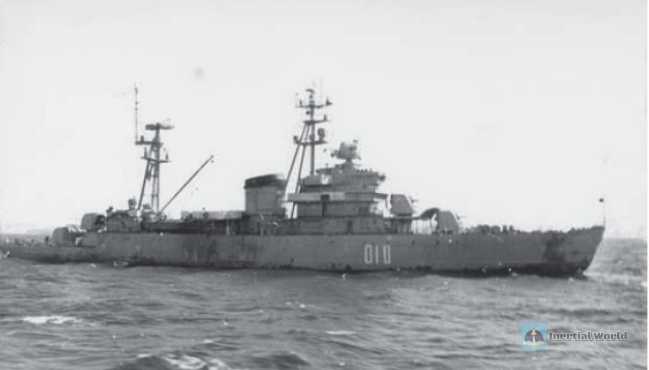
In the late 1960s, due to the frequent appearance of US and Canadian warships and civilian ships on the coastline of the Soviet Arctic, the Soviet Navy and the State Security Committee commissioned the Leningrad Navy Department Shipyard to develop a Type 97 military diesel-electric icebreaker based on the Type 97.
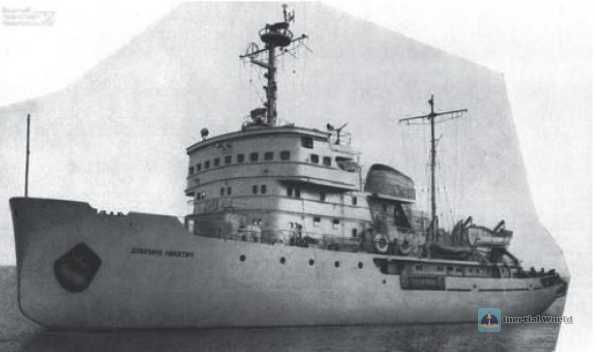
Different from the civilian type, the Type 97 military type canceled the bow propeller and set up a landing platform for the Ka-25PS helicopter. The entire hull is divided into 7 compartments, which can ensure that it will not sink even if 1~2 adjacent compartments are flooded by seawater. In order to reduce the roll of the ship, two anti-roll tanks were set up, but the problem was not solved in the end. Due to the severe roll, sometimes the sailors and the Ka-25PS helicopter could not work normally. Therefore, the Soviet Navy sailors nicknamed the Type 97 improved type "baboon".
The Type 97 military type is 70 meters long, 18.1 meters wide, 6.14 meters deep and 33 meters high. The standard displacement is 2,785 tons, the maximum displacement is 3,710 tons. It is equipped with three 4,000-kW 13D100 diesel engines and five auxiliary motors. The speed is 15.4 knots, the economic range is 10,700 nautical miles, the full-speed range is 6,000 nautical miles, and the self-sustaining capacity is 50 days and nights. The weapons are a 76 mm AK-726 twin-barreled naval gun, a "rotating frame" fire control radar, two 30 mm 6-barreled AK-630 naval guns, a "signal flag" fire control radar, a "bridge" warning radar, and a Ka-25PS or Ka-27PS helicopter. The crew is 123 people (including 10 officers), and can carry a 1390-type command boat and a 338P-type work boat.
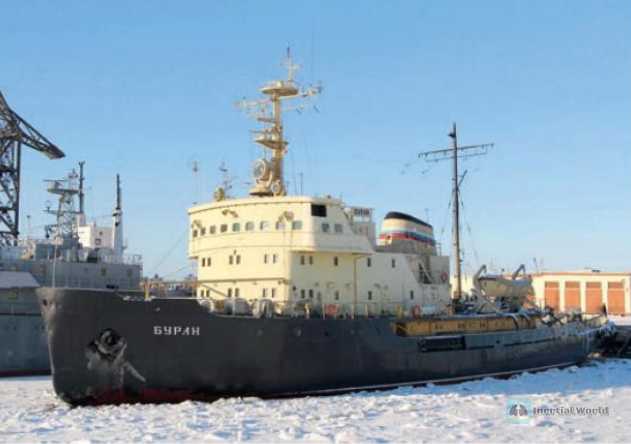
On December 31, 1965, the first Type 97K "Ilya Muromets" was commissioned in the Pacific Fleet. Speaking of the name "Ilya Muromets", there is a little-known story behind it. The first Type 97K ship is the third Soviet military diesel-electric icebreaker named after it. Ilya Muromets is a legendary hero in ancient Russia, known as a warrior. Legend has it that he couldn’t walk when he was born. In order to cultivate his steel bones and become a warrior, he stayed in the furnace for 33 years. Therefore, he is revered by Russian shipbuilding designers.
The first Soviet military steam-powered icebreaker, the Ilya Muromets, was built at the Swanhunt Shipyard in Newcastle, England. The ship has a maximum power of 4,000 horsepower and can break ice 0.6 to 1 meter thick. It has participated in two world wars. The second ship, the Ilya Muromets, was paid to the Soviet Union as compensation after Germany’s defeat in 1946. It was originally named the Polar Bear and was built by the Gothenburg Shipyard in Sweden in 1942 under an order from Germany and participated in World War II.

On September 24, 1966 and December 31, 1973, the second Type 97A "Buran" and the third Type 97P "Ivan Susanin" served in the Baltic Fleet and the Pacific Fleet respectively. In 1979, the "Ivan Susanin" successively completed the tasks of escorting the K-320 nuclear submarine from the Northern Fleet to the Pacific Fleet, escorting the K-320 nuclear submarine under the ice of the Chukchi Sea, and escorting surface ships on the ice. On February 6, 1975, the fourth Type 97P "Iceberg" served in the 1st Border Patrol Ship Division of the Far East of the National Security Committee. The ship has participated in many maritime rescue operations and rescued a total of 36 crew members. In March 1978, the "Iceberg" successfully rescued the "Volochaevsk" conventional-powered submarine that crashed in Litke Bay. On June 23, 1983, the ship rescued all the crew members of the K-429 nuclear submarine.
On September 25, 1975, the fifth Type 97P "Ruslan" was commissioned in the Soviet Navy’s Northern Fleet. On September 30, 1976, the sixth Type 97P "The 25th Congress of the Communist Party of the Soviet Union" was commissioned in the 1st Border Patrol Ship Division of the Soviet State Security Committee in the Far East. The ship participated in the search for the crashed Korean Boeing -747 passenger plane. On December 12, 1977, the seventh Type 97P The 97P-type "Danube" served in the 1st Border Patrol Ship Division of the Soviet State Security Committee in the Far East. In 1978, the ship participated in the rescue of the US "Orion" maritime patrol aircraft in the Bering Sea and the containment of maritime smuggling ships.
On December 29, 1978, the 8th 97P-type "Neva" served in the Northern Fleet. In 1980, the ship began to serve in the Pacific Fleet and participated in the operation to cover the K-223 nuclear submarine. From 2000 to 2002, the ship participated in maritime anti-smuggling operations many times and seized hundreds of tons of smuggled goods.
On December 26, 1980, the 9th Type 97P "Volga" entered service in the 1st Border Patrol Ship Division of the Soviet State Security Committee in the Far East. In the 1980s, the ship was mainly responsible for maritime patrol, maritime anti-smuggling and maritime rescue missions. On May 10, 1990, the ship officially visited the Port of San Francisco, USA, to participate in the celebration of the 200th anniversary of the establishment of the US Coast Guard. In order to participate in the celebration, the ship was specially equipped with two 45 millimeter caliber salute. This was the first visit of a Soviet military diesel-electric icebreaker to the United States during the Cold War.
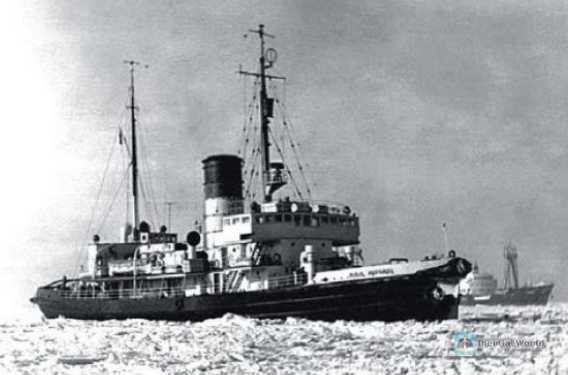
On December 25, 1981, the 10th Type 97P "Murmansk" was commissioned in the 1st Independent Border Patrol Ship Brigade of Kuvshenskoye Sarma, Murmansk. The ship created the first history of Soviet-Russian maritime history to enter the Franz Josef Land Archipelago and erected a boundary marker on the island.
Before the disintegration of the Soviet Union, the Soviet Navy was equipped with a total of 3 Type 97 civilian diesel-electric icebreakers and 5 military diesel-electric icebreakers of the 97A, K, and P models. At the same time, the Soviet State Security Committee was equipped with a total of 5 Type 97Ps. In addition, the Soviet Ministry of Maritime Transport also had more than 20 Type 97 Type 97 civilian diesel-electric icebreakers. At the same time, the U.S. Coast Guard was only equipped with one "Polar Star" and one "Arctic Sea" diesel-electric icebreaker, which was far inferior to the Soviet Union. In the 1970s and 1980s, Soviet military diesel-electric icebreakers often appeared in the Arctic waters, posing a strong deterrent to the NATO Navy led by the United States, and were called the most glorious era by the Russians.

Tangled reality
In the early 1990s, with the disintegration of the Soviet Union, the Russian Navy’s military diesel-electric icebreakers were no longer in the limelight. Due to a serious shortage of military funds, the Russian Navy’s Pacific Fleet and Northern Fleet retained two military 97-type icebreakers each, and the remaining four 97 Type 21180 civilian and military diesel-electric icebreakers will be transferred to the Russian Ministry of Maritime Transport or directly retired from active service.
In 2014, based on the fact that NATO, led by the United States, publicly declared that it had strategic interests in the Arctic and frequently held large-scale military exercises in the Arctic, Russian Defense Minister Sergei Shoigu announced to the media that the Russian military would form a military cluster in the Arctic to ensure that national interests in the region are not violated by foreign forces. At the same time, the Russian Ministry of Defense officially launched the development of the Type 21180 "Ilya Muromets" military diesel-electric icebreaker plan to replace the old Type 97. The first Type 21180 ship also became the fourth Soviet military diesel-electric icebreaker named "Ilya Muromets".
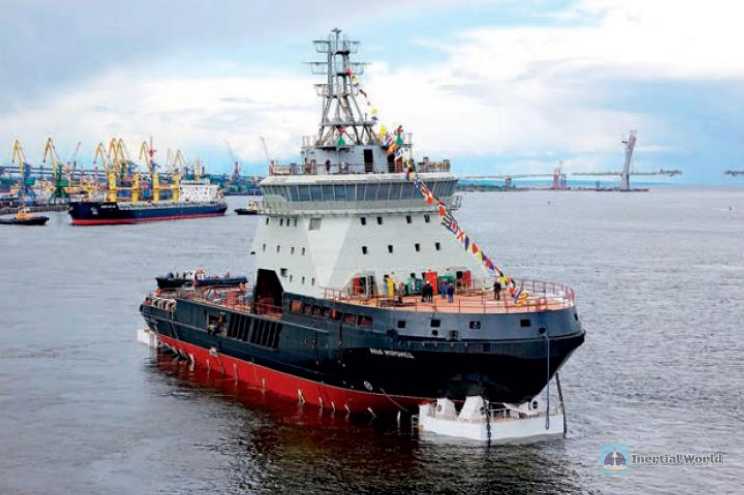
In April 2015, the keel of the 21180 type "Ilya Muromets" was laid at the Admiralty Shipyard in St. Petersburg, becoming the first new military diesel-electric icebreaker developed for the Russian Navy Auxiliary Fleet after 45 years. In June 2016, the ship was launched at the Admiralty Shipyard, and on January 2, 2018, it was officially incorporated into the Russian Navy Northern Fleet Auxiliary Fleet.
The 21180 type "Ilya Muromets" has a displacement of 6,000 tons, a length of 85 meters, a width of 20 meters, a side height of 10 meters, a draft of 6.8 meters, a speed of 15 knots, a breaking ice thickness of 1 meter, a range of 9,000 nautical miles, a self-sustaining capacity of 2 months, and a crew of 35 people.
This type of icebreaker adopts a single-deck design structure, abandoning the vertical front wall superstructure of ordinary military diesel-electric icebreakers and using an inclined front wall superstructure like frigates and destroyers. It can be equipped with AK-630 naval guns in wartime.
The 21180 type has the following main features.
First, it is versatile. This type of icebreaker can not only carry out military missions such as escorting naval vessels, but also patrol, tug and scientific research missions. Second, it has a long range. The maximum range of the ship is 12,000 nautical miles, comparable to nuclear-powered icebreakers. Third, it has a long self-sustaining capacity. The ship can sustain itself for up to 2 months. Fourth, it has strong maneuverability. The ship is powered by 4 diesel-electric propulsion systems (4x2650 kW) and 2 AZIPOD pod-type electric propulsion systems (2x3500 kW) produced by the Finnish Steerprop Company, as well as a bow propulsion system, which greatly improves the maneuverability of the icebreaker. The ship is also equipped with a 26-ton crane and a 2-ton crane, a Ka-27 or Ka-32 helicopter landing and take-off platform, and a BL-820 service boat. The boat is 8.7 meters long, 1.5 meters high, with a maximum weight of 1.5 tons, an engine power of about 220 kilowatts, a maximum speed of 25 knots for 14 people, a range of 200 nautical miles, and a self-sustaining capacity of 8 hours. It can sail in level 6 waves, and the hull is made of fiberglass.
In addition, the 21180-type icebreaker is equipped with new meteorological observation instruments, test equipment, multi-function computers, and hydrological survey equipment.
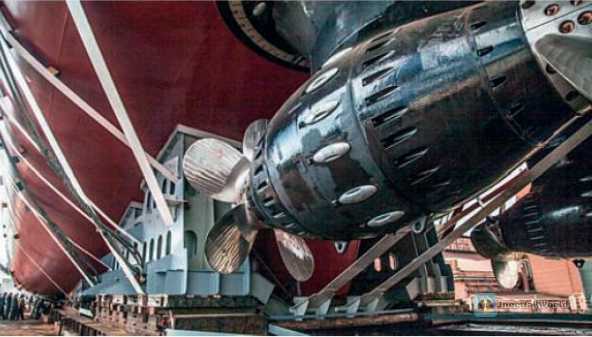
Despite its many advantages, the 21180-type "Ilya Muromets" also has a fatal weakness. Due to its large draft, the ship cannot enter and exit the important ports of the Russian Navy in the Arctic-Tiksi and Dikson. According to the "Russia’s National Policy in the Arctic for 2022-2025", the Russian Navy will rebuild the ports of Tiksi and Dikson to develop the Northern Sea Route and the Arctic coastline. At the same time, the Russian military plans to deploy the S-400 air defense missile system and other technical support forces, as well as a naval ship repair factory in the port of Tiksi.
In the spring of 2018, the Russian Ministry of Defense decided to postpone the mass production of three 21180-type icebreakers and develop the 21180M type. On December 30 of the same year, the keel laying ceremony of the first 21180M-type ship "Evpaty Kolovrat" was held. On November 20, 2020, the ship was completed at the "Diamond" Shipbuilding Company and rolled off the dry dock.
Compared with the 21180-type "Ilya Muromets", the 21180M has a shallow draft, small dimensions and a low price.
The 21180M "Evpaty Kolovrat" has a displacement of 4,800 tons, is 82 meters long, 19 meters wide, has a draft of 4.6 meters, a maximum speed of 14 knots, and a range of 7,600 nautical miles. The "Bay-LK-21180" digital control system installed on the ship can monitor the working conditions of the power system and other equipment in real time. The crew is 28 to 30 people and the self-sustaining capacity is 30 days. The ship’s propulsion system is equipped with two AZIPOD podded electric propulsion systems produced by the Finnish Steerprop Company, a fixed-pitch propeller produced by the Russian "Propeller" Scientific Production Association, and a bow propulsion system. Compared with the 21180 type, the power of the podded electric propulsion system installed on the 21180M type is reduced.
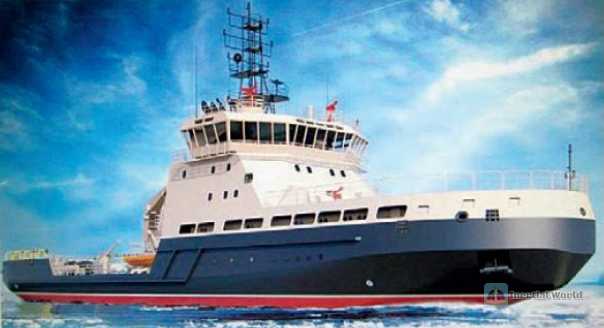
Mikhail Bakhrov, chief designer of the 21180M project of the "Signal Flag" Design Bureau, pointed out that since the draft depth has been reduced to 4.6 meters, the 21180M can freely enter and exit the ports of Tiksi and Dikson. This type of ship retains the performance of the 21180 type in breaking ice with a thickness of 1 meter at a speed of 2 knots. Since the "Propeller" Scientific Production Association does not yet have the ability to produce podded electric propulsion systems, the 21180M type still uses the Finnish system.
The 21180M type has a helicopter landing and take-off platform on the bow deck. The stern deck superstructure can carry a BL-820 service boat. In addition, this type of icebreaker can also be equipped with AK-630 naval guns in wartime.
The launching ceremony of the "Evpaty Kolovrat" is scheduled to be held in 2021. In 2022, this type of icebreaker will officially serve in the Pacific Fleet. The second 21180M type is scheduled to be completed and delivered to the Northern Fleet by 2027. Due to the impact of Western sanctions and the new crown epidemic, the delivery time of this icebreaker is very uncertain.
As of December 2018, the Russian Northern Fleet was equipped with only two military diesel-electric icebreakers, one of which was the newly equipped 21180 type "Ilya Muromets" and the other was the 97P type "Ruslan" which has been in service for more than 45 years. The two 97P type icebreakers equipped by the Russian Pacific Fleet are also in maintenance status. If the first 21180M type ship fails to serve in the Pacific Fleet as scheduled, the fleet is likely to end its history of being equipped with military diesel-electric icebreakers like the Baltic Fleet. In addition, the 21180/21180M icebreakers are usually not equipped with shipborne weapons.

The future is promising
In view of the shortcomings of the 21180/21180M type, the Russian Navy plans to develop and equip two brand-new 23550-type military diesel-electric icebreakers.
On April 19, 2017, the keel of the first 23550-type (product code "Arctic" factory number 02460) "Ivan Papanin" was laid at the St. Petersburg Admiralty Shipyard. The 23550 type is a new concept multi-purpose icebreaker that integrates patrol ships, icebreakers and tugboats. The hull structure of the 23550 type has been reinforced to ensure combat operations in the Arctic. In addition, this type of icebreaker can sail in tropical waters.
The "Ivan Papanin" has a displacement of 9,000 tons, is 114 meters long and 20 meters wide, has a draft of 6 meters, and a maximum range of 10,000 nautical miles: self-sustaining capacity of 70 days and nights, a speed of 18 knots, an ice thickness of 1.7 meters, and can travel uninterruptedly in 1-meter-thick ice. The crew is 60 people. The bow of this type of icebreaker adopts a typical round outline and a design with a rearward superstructure, which is very similar to the appearance of the Norwegian Navy’s "Svalbard" and the Canadian Navy’s "Harry DeWolfe".
The 23550 type has the following distinctive features.
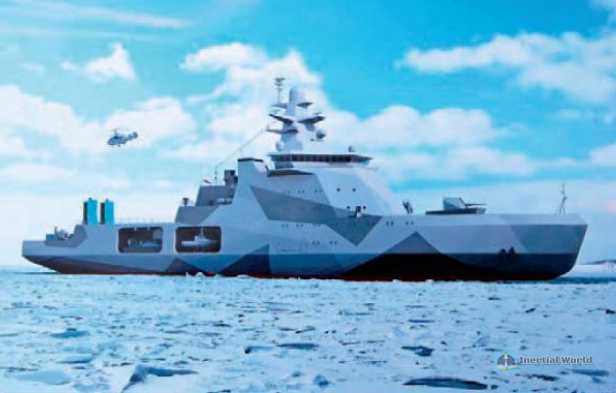
First, the Type 23550 is completely domestically produced, including the power system. The system consists of four 28-9DG diesel generator systems (4x3,500 kW) produced by the Kolomna Thermal Power Plant and two electric propulsion systems (2x6,300 kW) produced by the Electric Machine Manufacturing Company, as well as a bow propulsion system.
Secondly, the Type 23550 is not only equipped with the AK-176MA naval gun, but also with the "Organo" search and guidance radar and electronic warfare equipment. If necessary, it can also be equipped with the "Club" K anti-ship missile system.
Third, the Type 23550 has expanded the deck helicopter landing and take-off platform, and also increased the number of speedboats it can carry. It can carry one "Raptor" high-speed patrol boat and one Type 23321 "Sheep Lynx" class hovercraft at the same time.
Finally, the Type 23550 has improved the efficiency of loading and unloading cargo. This type of icebreaker can carry a 20-ton floating bridge to transport cargo to difficult-to-reach coasts. This type of icebreaker is also equipped with two 25-ton cranes and special rescue equipment at the stern to rescue ships in distress. Despite being equipped with an AK-176MA naval gun, Russian military expert Kirill Liabov believes that the Type 23550’s shipborne weapons are still very limited. If a conflict occurs with a powerful enemy, the Type 23550 will be vulnerable, so it must be equipped with the "Club" K anti-ship missile system.
According to the Russian Navy’s weapons and equipment plan, the Russian Navy will be equipped with the "Ivan Papanin" in 2023. In 2024, the Russian Navy will also be equipped with the first 23550 mass-produced "Nikola Zubov". In fact, according to the original plan, the two icebreakers should be delivered to the Russian Navy in 2019 and 2020 respectively. Due to funding and other reasons, the delivery plan was forced to be postponed. It is expected that by 2027, the Russian Navy will be equipped with a total of 1 21180 type (and 1 keel laying time is not yet determined), 2 21180M type and 2 23550 type military diesel-electric icebreakers, which exceeds the number of 3 new PSC diesel-electric icebreakers that the United States will soon equip. Whether in terms of technical and tactical performance or in terms of combat use, the Russian Navy’s new diesel-electric icebreakers can fully compete with the US PSC icebreakers. In this regard, Germany’s Der Spiegel magazine pointed out that by 2027, with the arrival of 5-6 new military diesel-electric icebreakers, Putin will turn the Arctic Ocean into "Putin’s Arctic Ocean." This allows the world to see again the former glory of the Soviet Navy’s "Arctic Warriors" more than 40 years ago.


